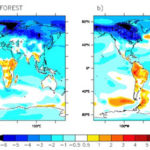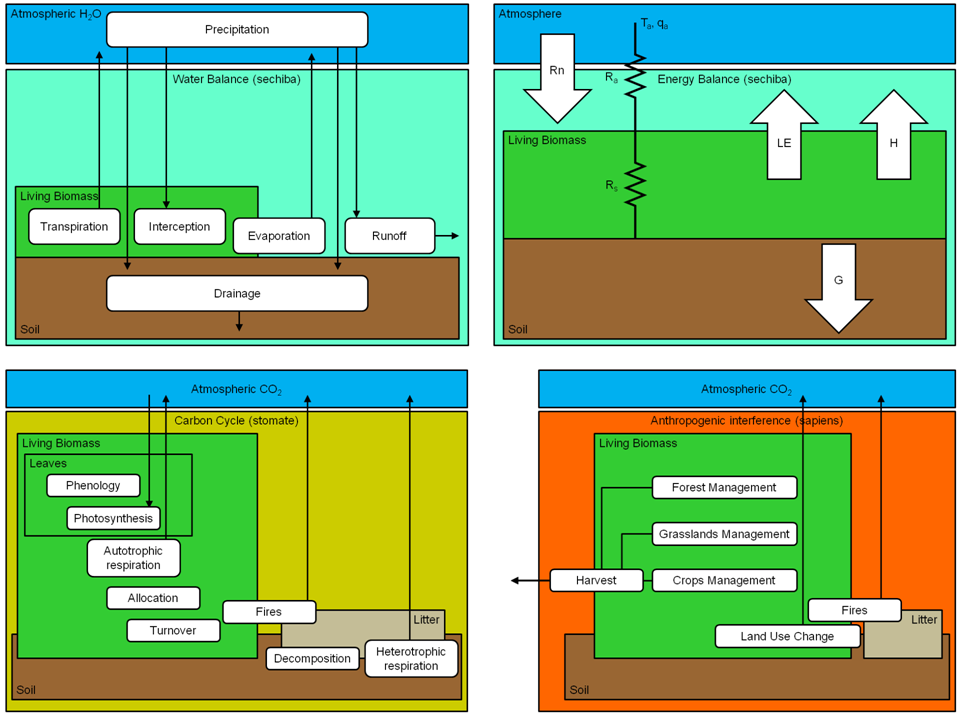Gallery: Climatic impact of global-scale deforestation
Climatic impact of global-scale deforestation: radiative versus non-radiative processes
All models investigated in this study simulated a negative sensitivity for both the land and the ocean carbon cycle to future climate. However, there was still a large uncertainty on the magnitude of these sensitivities. Eight models attributed most of the changes to the land, while three attributed it to the ocean. Also, a majority of the models located the reduction of land carbon uptake in the Tropics. However, the attribution of the land sensitivity to changes in net primary productivity versus changes in respiration is still subject to debate; no consensus emerged among the models.











